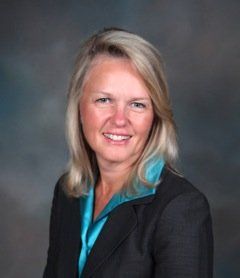Successful payer-provider collaborations: 4 characteristics
While value-based reimbursement presents opportunities for payers and providers, succeeding in such a reimbursement model can be challenging. Here are four things to strive for that could increase the likelihood of success in a value-based reimbursement model.
Physicians want to do what they went into medicine to do: Take care of patients through building and fostering strong relationships with them. In the fee-for-service world, however, many independent physicians believe that calling cannot be realized. That’s because in order to stay in business, they need to see as many patients as they can during the day-and that translates into seeing each patient for only about 10 or 15 minutes, says Jeff Butler, chairman and chief executive officer of Arlington, Virginia-based Privia Health, a national medical group. Value-based reimbursement, he says, can change that.

Butler“The opportunity for these providers is to come alongside and be the strategic partners of health plans … and really get aligned on managing a population and getting rewarded, not for doing more stuff, not for seeing more patients, but getting rewarded for keeping people healthy and keeping them out of the acute care setting,” says Butler.
While value-based reimbursement presents opportunities for payers and providers, succeeding in such a reimbursement model can be challenging. Here are four things to strive for that could increase the likelihood of success in a value-based reimbursement model.
1. Stronger partnerships
To take advantage of value-based care payment models, such as accountable care organizations, independent physicians must align with other providers. That alignment requires adapting to common technology, common platforms, common work flow, and common systems, says Butler. “They don’t have to be geographically located next to each other. But they need to be on a common platform that allows them to get the efficiencies and [economies] of scale, and to benefit from the technology and the people and the expertise that are needed in order to be able to take on risk.”
For larger healthcare systems and managed care organizations that are onboarding new physicians, that means a critical aspect of alignment is providing physicians with the resources necessary to adopt and adjust to the broader organization’s technology platforms.
When onboarding new practices, Privia Health, for example, introduces physicians to population health and risk management systems that enable them to focus on providing patient care, says Butler. After about four to five months using these systems, physicians can spend an hour with patients who have many complex co-morbidities-instead of the typical 10 or 15 minutes they could spend in the fee-for-service model, says Butler. It makes sense to invest time in these patients, because it could prevent a costly ER visit later, he says.
Conversely, if patients need something minor addressed, such as a prescription refill, they can see a nurse or communicate with the practice via secure e-mail-instead of having to come in and take up an appointment slot with the physician, says Butler.
Next: The second characteristic
2. Unlimited primary care

WilsonTo succeed in value-based care, payers and providers have to provide as much primary-care as necessary to enrollees, says Linde Wilson, executive advisor for L.E.K. Consulting’s Healthcare Services Practice. “That way, primary care providers can capture issues early and they can prevent patients from going to specialist care. Providers can also use innovative models that include [advanced practitioners] and nurses,” she says.
Harken Health, an affiliate of UnitedHealthcare, has developed a model that provides unlimited primary care to all of its enrollees-with no copays, says Wilson.
In exchange for a monthly membership fee, enrollees pay no copays for visits to Harken Health Centers in Illinois and Georgia, according to the company. Members receive 24/7 access to their doctor and can have questions or concerns addressed in an office visit or by phone, e-mail, or video chat. They also have access to a health coach and behavioral health specialists for short-term counseling, assessments, and referrals.
This approach allows the practice to be innovative and incorporate nurse practitioners and physician assistants, she says. “My belief is if they’re not always going to use physicians, and they’re going to have people practicing at the top of their licenses, [Harken Health] could really have something here that could help keep patients healthier.”
Next: The third characteristic
3. Expanded services
Another model Wilson is particularly excited about is the Camden Coalition of Healthcare Providers in Camden, New Jersey. In this model, patients with frequent hospital admissions are identified using information from the Camden Health Information Exchange. The Camden Coalition’s staff members meet patients while they’re in the hospital and offer access to care-coordination services with a community-based team of nurses, social workers, community health workers, and health coaches for about 90 days, according to the organization. The organization’s staff also works with patients to navigate behavioral and social barriers to wellness. The belief is that access to primary care, transportation, and housing can help prevent readmissions.
4. Empowered physicians

WagarMark Wagar is president of Northridge, California-based Heritage Medical Systems, an affiliate of the Heritage Provider Network, which is one of the country’s largest pioneer accountable care organizations. He says that for many years, physicians have lacked insight into the total cost and quality of care when their patients use a particular healthcare delivery system for a surgical procedure, for example.
Heritage Provider Network is now combining claims information with quality information and providing physicians access to that information. That way, a physician can identify, for example, in which hospital a patient in need of a particular procedure will likely have a more positive outcome at a lower cost.
Aine Cryts is a writer based in Boston.
Extending the Capabilities of the EHR Through Automation
August 2nd 2023Welcome back to another episode of "Tuning In to the C-Suite," where Briana Contreras, an editor of Managed Healthcare Executive, had the pleasure of chatting with Cindy Gaines, chief clinical transformation officer at Lumeon.
Listen